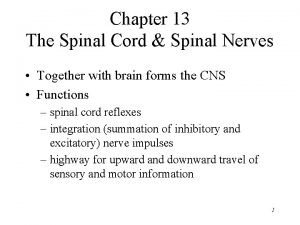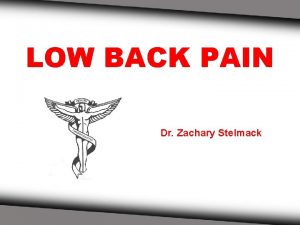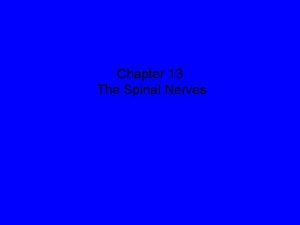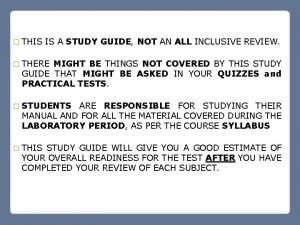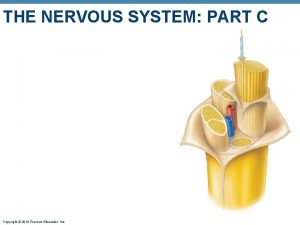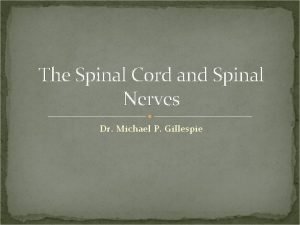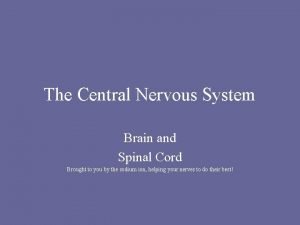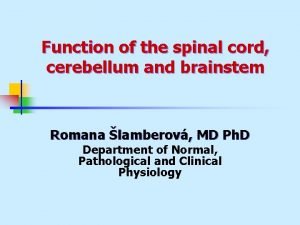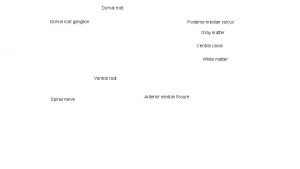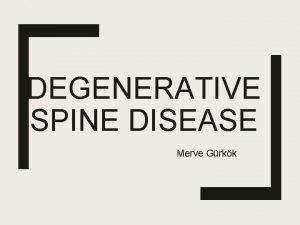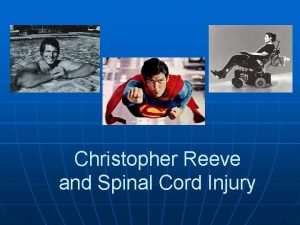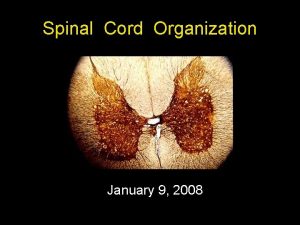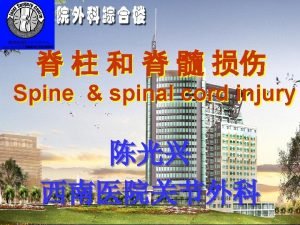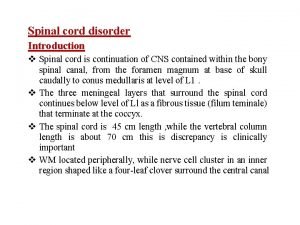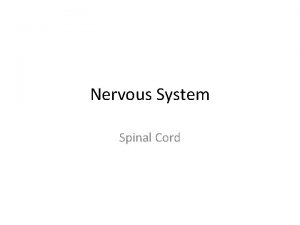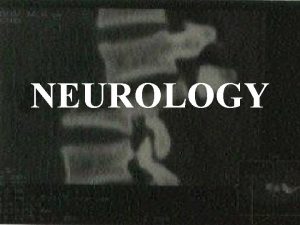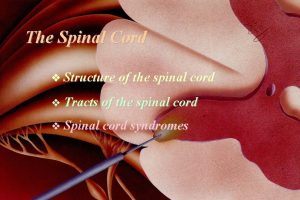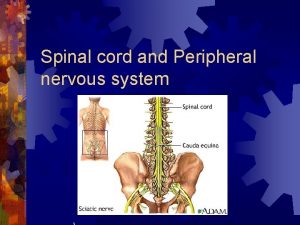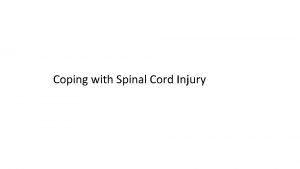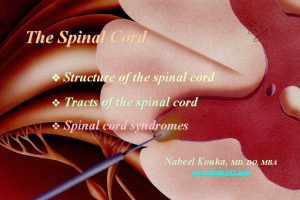Spinal Cord Notes ANATOMY OF SPINAL CORD n


















- Slides: 18

Spinal Cord Notes

ANATOMY OF SPINAL CORD n Extends from medulla oblongata n Ends at second lumbar (L 2) vertebra in adults n 31 pairs of spinal nerves n Conus medularis – end of cord


n Two enlargements: n n Cervical enlargement - C 4 – T 1 – nerves to & from upper limbs Lumbar enlargement – T 9 -T 12 – nerves to & from lower limbs

n Cauda equina = “horse’s tail” n After conus medullaris, spinal cord divides into nerves that leave at lower levels


CROSS SECTION ANATOMY n Two grooves divide spinal cord: Anterior median fissure (deeper) n Posterior median sulcus n Gray matter (unmyelinated) forms an “H” in center n Gray commissure where fibers cross from side to side n


n Central canal – center of gray commisure; continuous with fourth ventricle n Gray matter is divided into horns: n Anterior (ventral) gray horns cell bodies of motor neurons to skeletal muscle

n Posterior ( dorsal ) gray horns n Lateral gray horns – cell bodies of motor neurons to cardiac, and smooth muscle & glands n Part of autonomic nervous system


n White matter (myelinated nerve fibers) is divided into columns n Anterior (ventral), posterior (dorsal), lateral white columns

n Each column is divided into nerve tracts n Each tract carries one type of information (sensory or motor) n Ascending (sensory) tracts impulses toward brain n Descending (motor) tracts – impulses from brain


n Spinal cord has two functions: n n White matter tracts serve as information highways to and from brain Gray matter receives and integrates information, especially for spinal reflexes

n Name of tract indicate position in cord, where it begins and ends, and direction of impulses

DEVELOPMENT OF NS n Begins in third week of development n Ectoderm forms a neural tube n Neural tube defect due to low levels of a folic acid n Spina bifida – failure of laminae of spine to unite, caused by low levels of folic acid

n Portions of neural tube form fluid- filled vesicles n Hypothalamus is one of last areas of brain to develop n No new neurons form after birth, only grow and maturation n Brain reaches maximum weight as a young adult
 Spinal nerves labeled
Spinal nerves labeled Spine meninges
Spine meninges Exercise 15 spinal cord and spinal nerves
Exercise 15 spinal cord and spinal nerves Rubrospinal
Rubrospinal Spinal cord cover
Spinal cord cover Low back rom
Low back rom Spinal cord nerve anatomy
Spinal cord nerve anatomy Spinal cord anatomy
Spinal cord anatomy Structure of spinal cord
Structure of spinal cord Lumbar enlargement
Lumbar enlargement Pia mater
Pia mater Spinal cord denticulate ligament
Spinal cord denticulate ligament Hypothalamus
Hypothalamus Hyporeflexia and hyperreflexia
Hyporeflexia and hyperreflexia Spinal cord
Spinal cord Cerebellum nuclei
Cerebellum nuclei Posterior median sulcus
Posterior median sulcus Spinal cord extends from
Spinal cord extends from Christopher reeve spinal cord injury level
Christopher reeve spinal cord injury level




